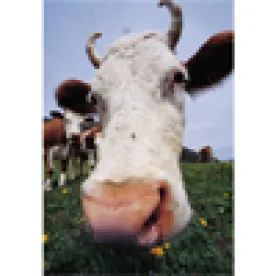The fortunes of agricultural businesses across the world have always been vulnerable to natural and economic forces such as climate change, world commodity pricing and exchange rate movement. Nowhere is this more evident today than in the current crisis facing the UK dairy farming industry where the unique political and environmental conditions of 2014 have driven milk prices down to some of the lowest levels seen in recent years testing the viability of many of the country’s dairy farmers.
The number of dairy farmers in the UK has been falling steadily for the last twenty years. In 1995 there were 35,741 dairy producers in the UK. In 2015, it is predicted that number will dip below 10,000 for the first time. Whilst insolvencies will only account for a proportion of exits from the industry, such failures are occurring and this trend is likely to increase in the coming months. Insolvencies in the agriculture sector are nothing new and with dairy looking set to be the next pressure point, confidence in the industry is low and stakeholders are likely to begin to look closely at their investments.
Dairy producers in the UK come in all shapes, sizes and business structures and fully securitising a farm can be complex due to the breadth of assets available to leverage. However, there are proportionally more SMEs in UK dairy farming with high numbers of family enterprises, sole traders and partnerships. To address this, the Agricultural Credits Act 1928 provides for an agricultural charge which is unique to the farming sector. It is essentially a form of debenture that can only be granted by a farmer who is not an incorporated company or society and enables the farmer to charge stock such as crops, horticultural produce, livestock, agricultural vehicles and plant.
2015 will see a number of developments that may impact the price of milk and ultimately the fortunes of the UK’s dairy farmers. The abolition of the EU milk quota on 31 March 2015 is likely to drive the price down in the short term, at least as a result of increased production in the immediate aftermath of the quota being lifted. The current UK parliament is also set to end in May 2015 and the months following a general election are notoriously uncertain for industry as a whole. Finally, Russia’s import ban is due to be lifted in August 2015 which should see demand rise again in the global market, hopefully restoring some equilibrium to milk prices.
The coming year looks set to be a period of unprecedented uncertainty and change for the UK’s dairy farmers. As such, it will be important for farming businesses and stakeholders to be proactive in fully understanding the financial health and viability of their farms and how the predicted market developments will affect them. For those who can successfully weather the volatility that has become synonymous with the industry over the last few years, current short term difficulties will hopefully be replaced by opportunity in the long term.
Helen Kavanagh also authored this article.



 />i
/>i

